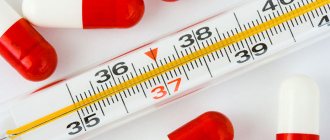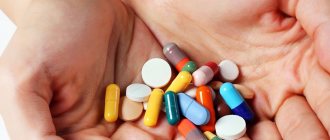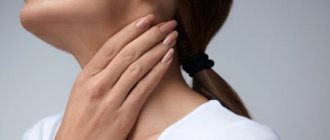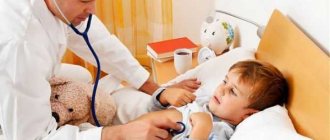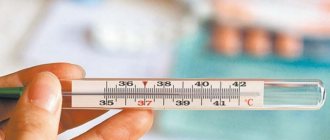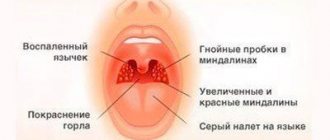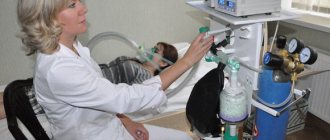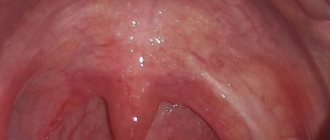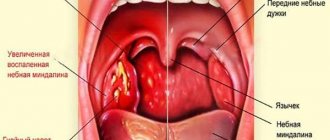All iLive content is reviewed by medical experts to ensure it is as accurate and factual as possible.
We have strict sourcing guidelines and only link to reputable sites, academic research institutions and, where possible, proven medical studies. Please note that the numbers in parentheses ([1], [2], etc.) are clickable links to such studies.
If you believe that any of our content is inaccurate, out of date, or otherwise questionable, please select it and press Ctrl + Enter.
Surgical treatment of hypertrophied tissue of the nasopharyngeal tonsils is carried out on an empty stomach. Therefore, the question of what to eat after adenoid removal in children is very relevant.
Parents should adhere to the following recommendations:
- The first food after surgery should be soft, neutral in taste, rich in vitamins and calories to restore the strength of the little patient.
- Too sweet, sour, salty or spicy foods are prohibited, as they irritate the nasopharynx and aggravate the painful condition.
- The child should be provided with plenty of fluids. Preference should be given to purified water at room temperature, natural fruit drinks, decoctions and tea. Sweet compotes, store-bought juices and carbonated drinks are contraindicated.
After adenotomy, the child should prepare semi-liquid porridge, mashed potatoes and other vegetables or fruits, and steamed cutlets. Rough, hard and hot foods should be excluded from the diet. A week after such a gentle diet, the doctor prescribes a more extensive diet, which speeds up the recovery process.
Nutrition after adenoid removal in children
The diet of people without tonsils is practically no different from the basic rules of a healthy diet. After removal of adenoids in children, the doctor prescribes a gentle diet that does not irritate the mucous membrane of the oropharynx, but supplies the body with vitamins.
Meals must include the following products:
- Cereals – used in pureed, liquid form. They satisfy hunger well and are good for children's bodies.
- Protein foods – your child can be given fermented milk products and milk. They normalize digestive processes and gently envelop the mucous membrane. Meat can be boiled, baked or stewed, but it should be minced before eating.
- Water balance - drinking plenty of fluids is necessary to irrigate the mucous membrane, improve its functioning and metabolic processes in the body.
In the first days after surgery, children can eat liquid meals at room temperature. These can be broths from vegetables and meat, dairy products, compotes. The postoperative period lasts about 7 days.
As for contraindications, children are not allowed to give hot foods and drinks. This is due to the fact that high-temperature foods can cause bleeding due to the dilation of blood vessels that are abundantly supplied to the pharynx. However, you can eat cold food.
Dishes with spices are prohibited, as they irritate the mucous membrane of the throat and cause swelling of the larynx. Carbonated drinks, sour, sweet and pickled foods are prohibited. Pickles have a high content of acids and salts, which negatively affects the condition of the mucous membrane.
Doctor's recommendations
After removal of the adenoids, the temperature in children rises on the first day. Does not rise above 38 degrees - the use of antipyretic drugs is not necessary. It is important to know that the use of antipyretic medications containing aspirin is limited. Medicines containing aspirin can cause bleeding.
After the operation, it is difficult to breathe through the nose, and swelling of the mucous membrane occurs. The treatment is as follows: we instill vasoconstrictor drops to help remove swelling, then we use drugs that dry out the mucous membrane.
A complex postoperative condition may be accompanied by bleeding, depending on the accumulation of parts of tissue remaining in the nasopharynx. If you notice bleeding, consult a doctor immediately. It is worth highlighting several situations; if you find them, consult your doctor:
- the appearance of nasality;
- difficulty breathing through the nose for two weeks or more.
Many children continue to breathe through their mouth after surgery, despite clear nasal passages and no breathing difficulties. Special gymnastics that strengthens the breathing muscles, recommended by doctors, will correct the situation.
Diet after adenoid removal in children
Tonsils protect the body from infection in the respiratory tract, therefore they are an important organ of the immune system. Surgical treatment of inflamed tissue temporarily disrupts the normal functioning of the body and reduces the defenses of the immune system.
The diet after adenoid removal in children is aimed at supplying the body with vitamins and other useful substances. It facilitates the postoperative period, accelerating the recovery process. Therapeutic nutrition spares the tissues of the pharynx and promotes healing of the surgical field.
Conventionally, the diet is divided into three stages, each lasting 2-3 days:
- Liquid dishes - dairy products, decoctions, broths.
- The diet includes pureed soups with chopped vegetables and ground meat, and pates.
- Your child can be given finely chopped boiled, stewed or baked vegetables, fruits, fish, and meat.
The main nuances of postoperative nutrition are:
- Drink plenty of fluids.
- Food at room temperature.
- Hot drinks are contraindicated as they can cause bleeding.
- The child can be given ice cubes made from decoctions of chamomile, eucalyptus and other herbs to dissolve. Cold constricts blood vessels, stops bleeding and relieves pain.
- You need to eat in small portions; a split diet is recommended.
The diet should be expanded gradually, about a week after surgery. The list of permitted foods includes: low-fat dairy products, non-acidic and unsweetened vegetables and fruits, cereals, broths, fruit ice, cool natural juices and decoctions.
During the diet, you should limit the consumption of rough and hard foods, which can cause bleeding. Fried foods, crackers, bread, and sausages are prohibited. Easily digestible carbohydrates are prohibited: chocolate, sweets, sugar and cakes. Sweet foods are a favorable environment for the proliferation of pathogens, which is dangerous after surgery.
After adenotomy, children should not be given vegetables and fruits with peels, as they adversely affect the mucous membrane of the oropharynx. Sauces, marinades, spices, and foods with high acidity are contraindicated. Such foods slow down the recovery process and can cause swelling of the larynx.
What to do in the first hours
If there is an abnormal growth of lymphoid tissue in the vault of the nasopharynx, the doctor removes it. Although the operation takes place literally in a matter of minutes, there is a risk of inflammation and severe postoperative bleeding .
Almost immediately after the adenotomy, the patient is placed in a ward, where he is constantly under the supervision of medical workers. To prevent aspiration of outgoing blood after excision of the adenoids, the following measures must be taken:
- The patient is turned on his side in bed so that the blood flows out.
- A thick towel is placed under the patient's head, onto which blood and mucus can drain.
- To alleviate the condition, gauze moistened with cold water is applied to the face of a sick child.
After 3 hours, the doctor who performed the operation performs a pharyngoscopy, during which the condition of the mucous membrane is assessed . If there is no severe swelling or bleeding, the child is discharged from the department.
After the child is discharged from the hospital, it is necessary to regularly see an ENT doctor for 2 weeks.
What to pay attention to
After an operation to remove adenoids, parents should listen carefully to all the child’s complaints. This is necessary in order to contact a specialist in a timely manner and prevent the development of dangerous complications. For 3 weeks, it is necessary to monitor both the regimen and nutrition of the sick child . After performing an adenotonsillotomy, the following recommendations should be followed:
- Do not give your child food that may irritate the throat mucosa. These foods include foods that are overly seasoned or salty. Food for the patient should be slightly warm.
- The baby should be protected from excessive physical exertion, as this can cause severe bleeding.
- You must follow all the doctor's recommendations. Use prescribed medications to treat the patient and be sure to use vasoconstrictor drugs.
- During the recovery period, after removal of the adenoids, you should not take medications that contain acetylsalicylic acid.;
- The room in which the patient is located is often ventilated and moistened by all available means.
After excision of the adenoids, the child is prohibited from giving aspirin to lower the temperature. This drug thins the blood, which may cause severe bleeding.
During the day, after the operation, an increase in body temperature of up to 38 degrees may be observed. You do not need to use antipyretic drugs, since this is an absolutely normal reaction of the body to the surgical intervention. If the elevated temperature lasts for several days, it is necessary to notify the doctor, as this indicates the beginning of an acute inflammatory process in the damaged tissues.
Possible consequences
Many parents treat the adenotomy procedure with excessive caution and believe that the consequences of removing adenoids can be extremely sad. About a year after removal surgery, some develop acute otitis media, as swelling of the injured tissue impairs the activity of the eustachian tube. In fact, this is not a reason to refuse surgical intervention. At the beginning of treatment, drops should be used according to the doctor’s prescription; most often they use Otipax. For several years, it is recommended to attend physiotherapeutic procedures, including the use of effective folk remedies, but only after consultation with a doctor.
Otipax and Anauran drops after removal of adenoids
The nasal tone that remains after removal of the adenoids is more functional in nature, since the nose is not ready to allow large volumes of air to pass through immediately after surgery. Most parents notice an initial change in the child’s voice, which after a while returns to normal as soon as the swelling in the nasopharynx subsides. Some people experience hearing loss after surgery, so often frightened parents are concerned about whether their hearing is restored. Here you should rely on the fact that this manifestation can also be a variant of the norm and hearing properties are normalized after the runny nose passes.
? In order to combat the occurrence of a speech defect in the form of rhinolalia, it is necessary to practice correct sound pronunciation after surgery and restore nasal breathing. There is also an opinion that the removal of adenoids can lead to the development of bronchial asthma; in fact, adenotomy can contribute to a calmer course of asthmatic processes in those children who were sick at the time of the operation to remove the adenoids.
Diet food
In the postoperative period after adenoid removal in children, it is very important to follow a gentle diet. Removal of overgrown adenoid tissue leads to significant swelling of the throat mucosa, therefore increasing the risk of injury. To prevent damage to the mucous layer in the throat, you need to exclude any irritating and solid foods from the menu of a sick child .
The diet after adenotomy includes the following foods:
- puree of vegetables and sweet fruits;
- lean meat broths;
- vegetable and various herbal decoctions;
- porridge spread with milk, oatmeal or semolina;
- light vegetable soups;
- steamed cutlets and meatballs.
After eating, the throat should be rinsed from food debris with a decoction of chamomile, sage or oak bark . These medicinal herbs contain special phytoncides that prevent the proliferation of pathogenic microflora. Thanks to such sanitation of the pharynx, the risk of developing septic inflammation is reduced.
Food for a sick child should not be very hot or very cold. It is optimal if the food is heated to body temperature.
After removal of the adenoids, you can start eating after 4-5 hours. At first, the child is given only broth to drink, and after a few hours, a baked apple or banana can be added to the diet. I don’t need to add salt on the first day.
Nutrition
Saturate your diet with natural vitamins.
Dad and mom are preparing for the fact that at first the baby who has undergone surgery will have a sore throat, so it’s worth sticking to a certain diet. After removal, you should not feed your child solid or hot foods. In the following days, you should not eat fried or spicy foods; you should limit meat foods. We list the foods that a child eats without fear of damaging the operated areas:
- The first week - you are allowed to drink half a glass of carrot juice in the morning. Taking kefir in the morning and evening is beneficial. Feed your baby buckwheat, oatmeal, and semolina porridge. Cottage cheese, vegetables, eggs diversify a child's diet.
- After a week, introduce soups into the diet, feed steamed meat, boiled liver, and fish.
- It is permissible to eat fruits in unlimited quantities.
What foods should not be given?
Improper nutrition can not only provoke an inflammatory process, but also contribute to the formation of an abscess on the back wall of the pharynx. Even if a small child has tantrums and wants his usual food, parents should not indulge these whims, as this can cause dangerous consequences. During the rehabilitation period after surgery, spicy, hot and seasoned foods, soda and low-quality juices are excluded from the diet.
Removing the consequences of the operation
The main attention is paid to the regime, proper diet, and hardening procedures. The postoperative period varies among patients and depends on the nature of the surgical procedure. A special feature of adenoid surgery is the absence of bed rest.
Parents should ensure constant monitoring and care of the child. Try to avoid violations of the regime.
Having removed the adenoids in the clinic, the child goes to his home 2 hours after the operation. The main task of parents is to provide a gentle home regime. During the first 24 hours, strict adherence to bed rest is necessary. Be sure to take a nap during the day, at least 2 hours.
To restore a child's body, rest and a calm atmosphere are needed.
The subsequent period is characterized by the absence of physical overstrain. Outdoor games, physical education, and visits to clubs should be limited. A quiet regime will ensure a uniform wound healing process, without additional infection. During the period of postoperative treatment, overheating of the baby is contraindicated; avoid taking a bath or going to the bathhouse. The child’s room must be ventilated and wet cleaned.
Breathing exercises
Breathing exercises after removal of the adenoids are the most optimal method of restoring physiological nasal breathing. Exercises are carried out daily for a couple of weeks. When performing breathing techniques, you must follow these recommendations:
- While bending and squatting, the child should take fairly deep exhalations.
- When spreading your arms to the sides, as well as during moments of rest, you should take deep breaths.
- Breathing should be smooth, sharp inhalations and then exhalations are unacceptable.
You can start performing breathing exercises no earlier than 5 days after the adenotomy. Every day the load is increased more and more in order to quickly restore the functions of the nasopharynx.
Rehabilitation after adenoid removal in children includes a set of exercises:
- The child stands up straight and places his arms along his body. Next, you need to exhale deeply so that the upper part of the peritoneum retracts.
- Take a deep, long breath through your nose, while your chest should rise and your stomach, on the contrary, should retract. Hold your breath for a couple of seconds, then exhale slowly through your nose.
- Take a deep, slow breath through your nose, while your stomach should protrude forward. After this, exhale slowly and the stomach is pulled in as much as possible.
Each breathing exercise exercise is performed at least 10 times in three approaches . If during classes the baby complains of dizziness or weakness, it is better to postpone classes for three days.
If a child has symptoms of a respiratory disease, then breathing exercises should not be performed, as this will significantly worsen the patient’s condition.
Caring for your child after surgery
The main task in the postoperative period is to create the right conditions for the child, which will help speed up the process of regeneration of the mucous membrane of the damaged epithelium. The recovery period includes full care for the child. For the first days after discharge, parents should be extremely attentive to the child and his complaints. Neglecting the advice of your doctor often leads to complications and relapse.
Diet. What can and cannot be eaten after adenoid removal?
Proper nutrition during the rehabilitation period must be observed in order to maximize the healing of wounds on postoperative tissues.
It is recommended to include in the child’s menu at this time:
- semolina porridge;
- kefir, cottage cheese, fermented baked milk;
- puree from boiled vegetables and fruits;
- meat and fish broths;
- baked or boiled pumpkin;
- puree soups.
To prevent the development of inflammation of damaged tissues, you need to rinse your mouth with decoctions of medicinal plants after eating. It could be chamomile or sage.
It is important to maintain a balanced diet and not indulge the child’s whims. In order not to provoke an abscess in the retropharyngeal region, you need to exclude some foods and drinks from the menu:
- spicy dishes;
- fruits that are too sour;
- pickled vegetables;
- sweets;
- unnatural juices;
- stew;
- canned food
Confectionery products after surgery can cause serious danger to a young body. Sweets contain a lot of sugar, and this is an ideal substrate for the growth of bacteria.
Breathing exercises. Nasal breathing training
Adenotomy is a simple operation, but after it is performed, it is important to perform breathing exercises with the child, which is aimed at restoring nasal breathing. It is advisable to do the exercises daily for the first few days.
Effective and simple classes are performed both in the morning and in the evening, the duration of classes is 15-25 minutes. The load must be increased gradually. For the first 2-3 days, it will be enough to perform 3 approaches. At the end of the first week, the number of repetitions should reach 10-13 times. The room where nasal breathing training will be carried out must always be ventilated.
Effective exercises to improve breathing through the nose:
- Stand up straight, press your hands to your chest. Start slowly inhaling and exhaling through your nose.
- Tilt your head back a little, spread your legs wide. Inhale slowly through your mouth, opening your mouth wide. Exhale, close your mouth.
- Your arms should be in a free, relaxed position, your feet should be shoulder-width apart. On a slow nasal inhalation, let the baby tilt his head first to the left shoulder, and on a relaxed exhalation to the right.
- Cross your wrists behind your back. Pull in your stomach. Slowly breathe through your nose.
- Interlace your fingers behind your head. Point your elbows forward. When taking a deep nasal breath, spread your elbows as wide as possible to the sides. With a slow and relaxed inhalation, return to the previous position.
- Do quick squats. The child, when going down, should exhale through his nose, and when going up, inhale.
- Pinch your nose with two fingers, count loudly to 10. Open your nose, inhale and exhale.
- Run fast in place. During this simple exercise, you need to raise your knees high enough and voluntarily take deep but slow nasal breathing.
- Spread your legs. Raise your arms very slowly and take a deep breath while doing this. Lower and exhale.
- Take a deep chest breath through your nose. Round your belly. Exhale, while drawing in your stomach.
When performing training, you should follow the following tips:
- inhalation and exhalation should not be sharp;
- when squatting or bending the body during gymnastics, the baby needs to exhale deeply;
- when you need to spread your arms, inhale.
During the first 12-14 days, the baby will often complain of sore throat. If the pain intensifies during the workout, then you need to take a break for that day.
What else is needed in the postoperative period
After discharge from the hospital, it is important to keep the room where the child will be kept clean. Dust removal and ventilation should be carried out daily
Lay out clean and fresh bed linen on the first day and change it every 3-4 days. In addition, you need to give your baby a napkin or handkerchief to spit out saliva. It is necessary to monitor the appearance of blood or ichor from the nose or in saliva.
For very young children, the doctor may prescribe antibiotics for the postoperative period (to avoid complications), constricting drops and children's painkillers.
What complications can there be?
If, after excision of the adenoids, the doctor’s recommendations are not fully followed, then local complications are possible. The most common health disorders that occur are:
- Severe nosebleeds begin if the patient is not given vasoconstrictor medications..
- Inflammation of the larynx can occur due to poor sanitation of the throat after eating, as well as during the day.
- Allergic reactions. Severe swelling of the throat mucosa can occur due to drug abuse.
- Paresis of the palate - surgical intervention reduces the elasticity of the walls of the throat, which can cause rhinophony.
Due to the location of the adenoids, the surgeon is not always able to completely remove the lymphoid tissue . This may lead to relapse of the disease, in which case another operation may be needed.
What else is needed during the rehabilitation period?
After adenotomy, the child must be protected from any physical activity for a month. At this time, the patient should not take hot baths, go to the bathhouse, or swim in the pool. In addition, you need to limit your baby's exposure to the sun.
After surgery, the child’s immunity becomes reduced, so there is a high risk of infection . To avoid this, you need to limit your baby's contact with a large number of people.
After removal of the adenoids, the child should rest more; during the rehabilitation period, daytime sleep is required.
To speed up recovery, it is imperative to use nasal drops with a vasoconstrictor effect. If the patient is allergic to them, the doctor will select a more gentle treatment option.
? Ice cream through the eyes of a doctor
There is a lot of talk surrounding the question: should you give your child ice cream? during the period of recovery and rehabilitation. It is a known fact that doctors from the American Association of Oral and Maxillofacial Surgeons even recommend doing this and suggest that parents give their children small ice cubes for further resorption after such surgery. Deciding whether a child needs to eat ice cream after adenotomy is considered by each parent individually, but it must be taken into account that it undoubtedly relieves swelling, since any exposure to cold is aimed at relieving inflammation of the mucous areas of the mouth.
Ice cream after adenoid removal is beneficial
It is recommended to give ice cream with a creamy taste, preferably without chemical additives and dyes.
Diagnosis and treatment of adenoids in children. Adenoids in children: symptoms and treatment.
11/10/2017 admin 0 Comments
It is clear without further ado, and there is no need to persistently convince parents that diet after adenoid removal in children is an extremely important aspect! And it is necessary to treat it with full responsibility. Because failure to comply with basic precautions with nutrition and the diet of the operated child, in 7 out of 10 cases of postoperative complications, leads to serious consequences.
Such as, for example, infection of the wound surface with purulent pathogenesis, postoperative sepsis of the gastrointestinal tract. The result: a disappointing picture in the general condition of the child, a long process of treatment in the hospital, sometimes in intensive care, in the intensive care ward.
What, first of all, do parents need to know (without fail) on this topic - postoperative diet? How to properly, tasty and, most importantly, without harmful foods, create a dietary menu for your baby who has undergone adenotomy surgery?
Warning! The information that parents of children with adenoiditis read from the articles on the site is educational in nature. The main goal of the site’s editors is to broaden the horizons of young parents on the topical problem of “Adenoids in children.” But you can practically use advice, recommendations, and recipes for treating children only after consultation with the treating pediatric otolaryngologist!
Features of the operation
All excited mothers and fathers whose children are scheduled for adenotomy are interested in the question of how adenoid surgery in children proceeds. Surgery is performed using anesthesia - local or general.
In the first case, the mucous membrane of the operated area is treated with an anesthetic, and a sedative is injected intramuscularly. In the second case, general anesthesia is used: the child is immersed in a medicated sleep, during which he does not feel pain and does not see what is happening.
How adenoid surgery in children proceeds depends on the equipment of the clinic and the characteristics of the pathology of the small patient.
Methods for removing adenoids in children:
- Classic adenotomy is the most common method. The operation to remove adenoids in childhood is carried out using an adenotop - a steel loop with a sharp edge. The procedure lasts several minutes, the technique is simple, but it has a significant disadvantage - the adenoids are removed by touch, there is no visual observation, and there is a possibility of partially damaging nearby tissues and organs.
- Aspiration adenotomy. In this case, the adenoids are removed not with a loop, but with a hollow tube, at the end of which there is a vacuum suction. The disadvantage is the same - the doctor cannot see the progress of the operation, so there is a risk of causing harm to another organ.
- Endoscopic adenotomy. The operation to remove adenoids in this case is carried out using an endoscope - a device that allows you to visually monitor the actions of the operating surgeon.
- Laser adenotomy. Removing adenoids with a laser has several advantages - minimal blood loss and reduced risk of injury during the operation.
- Electrocoagulation. The adenoids are removed with a loop that has been exposed to heat.
Tips and recipes for a healthy postoperative diet
After the operation, an experienced otolaryngologist will definitely instruct parents in detail about when, what, in what volume and what kind of food the child can be fed. At the request of the parents, she will draw up an approximate diet menu for the first day after the operation. If the dynamics of capillary stopping are positive and calm, he will describe what dishes can be given to the child in the coming days.
It will warn parents to carefully monitor the baby’s condition, note and signal suspicious signs after eating - nausea, vomiting, clots of scarlet blood from the nose (throat arches). An increase in temperature in the evening, chills, and new pain sensations (tugging, aching pain in the operating areas) should alert you.
Parents should remain vigilant and not relax after the anxious hours of the operation. Now comes the period of competent and proper nutrition of the operated baby. Choose high-quality products for dietary nutrition, do not buy from market sellers of dubious appearance, outside the sanitary territory of the market, shops (from hand, from the ground, from grandmothers).
At first, prepare everything pureed - pureed vegetable soups (carrot and potato), with the addition of a minimum amount of salt, a little vegetable oil (not butter!). Add egg yolk for taste. The consistency of soups and porridges should be perfectly uniform, without grains or lumps.
Eliminate pickles, spicy and fried foods completely from the menu (breakfast, lunch, afternoon snack and dinner). Everything is extremely lean, without spices or seasonings. Let your child drink more: neutral fruit juices (birch, carrot), non-carbonated pure mineral water. Apple and grape juices are good, contain a strong range of vitamins, but have an irritating acid composition - malic and grape acid, which will irritate visceral neuro receptors in the nasopharynx.
CAREFULLY! It is necessary to strictly monitor the temperature of the food. Not hot, but not cold either, moderately warm.
IMPORTANT! Do not forget that the child must gargle with clean boiled water to remove any remaining food from the larynx!
